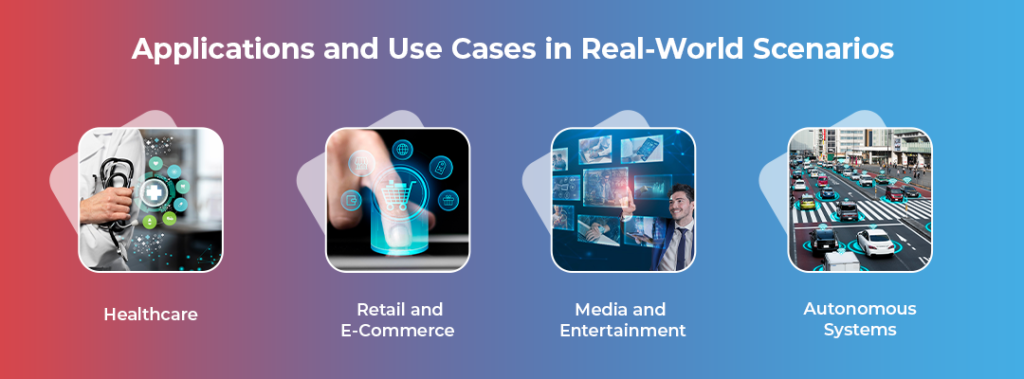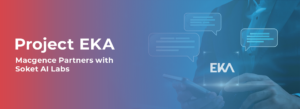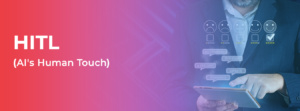- Understanding the Basics: What Are Large Multimodal Models (LMMs)?
- What are the distinctions between LMMs and LLMs?
- The Development of LMMs Within AI and Machine Learning Technologies
- Potential and Practical Applications in Real Life
- Challenges and Limitations of Large Multimodal Models
- Tools and Frameworks for Developing LMMs
- Tips for Optimizing LMMs for Performance and Efficiency
What Are Large Multimodal Models (LMMs)?
LMMs systems have created a shift within the AI research community. These systems are redefining entire industries with their implementations. However, the question arises: What is a Large Multimodal Models (LMMs)? How do LMMs differ from Large Language Models (LLMs)? And most importantly, why should developers, data scientists, and AI enthusiasts pay attention?
This blog will address all of your queries. We will dive deeper into what LMMs are, compare them to LLMs, investigate their history in AI, and finally, discuss the new realities in the domain of challenges, tools, and opportunities that LMM models bring.
Understanding the Basics: What Are Large Multimodal Models (LMMs)?
With the fast-paced development of AI technology, researchers face the challenge that comes from an overwhelming variety of data. In came Large Multimodal Models (LMMs) to solve, process, and analyze data from varying modalities – text, images, audio, and video. While traditional AI models can only manage a single type of data, LMMs are advanced, and in fact, excel at understanding and generating insights from a blend of diverse data inputs.
Consider an LMM with the capability to analyze an image and provide a coherent text explanation, perform object recognition, along with drawing contextual meaning all in one go. Unlike traditional LLMs, LMMs differentiate themselves with their ability to cross correlate and reason with data of varying formats.
What are the distinctions between LMMs and LLMs?
Supported Modalities: Exclusive text data is the only focal point for LLMs. They remain unrivaled when it comes to the comprehension and generation of human language. LMMs, in contrast, work with images and audio alongside text, making them much more integrated with varying modalities.
Practical Applications: LLM implementation is best fitted for chatbot interactions, content writing, and other conversational AI features, while LMMs have the upper hand in video captioning, cross-modal retrieval, and interactive multimedia content analysis.
Training and Complexity: Because LMMs work with multiple modalities at the same time, they require much more sophisticated data and training architecture compared to LLMs.
Macgence assists in the efficient posing of datasets in order to train LMMs and LLMs and provide expert fusion of multimodal data to help design next generation AI tools.
The Development of LMMs Within AI and Machine Learning Technologies
Multimodal models have been around for a while. However, large-scale models are a more recent development. This change in focus can be attributed to progress made in deep learning and the ever-growing accessibility to computation power.
Foundational Phase: Early attempts at creating multimodal models were not successful at merging data from multiple formats. Many of them needed individual pipelines for each modality, which resulted in a lack of efficiency.
The Paradigm Shift With Transformers: The change in model architecture to transformers, which power models such as GPT and BERT, enabled the seamless processing of multimodal data. The self-attention property of transformers makes it possible for LMMs to align and analyze how different modalities relate to one another.
Monumental Growth: The recent advances in scaling, such as GPT-4 by OpenAI, PaLM by Google, and others, have enabled the creation of LMMs that can process an enormous amount of multimodal data.
Potential and Practical Applications in Real Life

LMMs are powerful and disrupt almost every industry. Here are a few notable applications:
1. Healthcare
Simultaneously, from medical reports and images, diagnose diseases and analyze data.
Enrich patient interactions with medical chatbots by using both text and image understanding.
2. Retail and E-Commerce
Like Google Lens for shopping – a customer takes a picture of a product, and the LMM bot provides a list of products matched with the image.
Bring out the hidden narrative of products with image-to-text analysis and accurate content generation.
3. Media and Entertainment
Bring about automation for captioning videos and intelligent content tagging for media organizations.
Develops deeper user behavioral insights to power immersion experiences with LMMs through user generated content.
4. Autonomous Systems
Improvement of self-driving car perception systems by linking images, videos, and sensor data information.
Improving the situational awareness of robots through synergetic processing of speech and video signals.
Challenges and Limitations of Large Multimodal Models
While LMM offer a lot of promise, there are several challenges to overcome:
Data Requirements: collecting and tagging massive multimodal dataset is no easy task. This is where companies like Macgence come in. Macgence specializes in offering pre-packed datasets to suit various AI/ML needs.
High Computational Cost: Multimodal data is expensive to train and deploy as it requires high computational resources for processing.
Ethical Concerns: One of the issues in LMM research regards tackling biases and ensuring ethical use of multimodal data.
Tools and Frameworks for Developing LMMs
For building an LMM, advanced tools and frameworks are required. Here are some of the popular ones:
PyTorch – It has dynamic support for building and training multimodal transformers.
TensorFlow – Powerful libraries like TensorFlow Hub have pre-trained multimodal models available.
Hugging Face – Multimodal model architectures like Vision Transformer (ViT) and CLIP are available ready to use.
OpenAI APIs – They provide advanced multimodal capabilities like image-text pairs.
Tips for Optimizing LMMs for Performance and Efficiency
Data curation: Have high-quality, well-annotated datasets with modalities evenly distributed. Macgence is a company that constructs these datasets to enable hassle-free training workflows.
Model fine-tuning: Improve the performance by applying fine-tuning on domain-specific data to pre-trained models.
Reduce model complexity: Apply distillation techniques to LMM models to reduce their size without a significant compromise on performance.
Future Trends and Innovations in the Field of LMMs
The most exciting aspect of LMMs is their future possibilities:
Interactive AI Agents: Systems that interact with the user through text, audio, and video to provide a fully personalized experience.
Cross-Lingual Multimodality: LMMs functions that process data in one language and output them in another, while integrating different modalities.
Federated Learning for LMMs: Increasing accuracy and privacy of the models using distributed learning methods.
Owing to continued innovation, it is without a doubt that LMMs will become the key aspects of the AI landscape serving unmatched efficiency and intelligence.
What LMMs Mean for the AI Landscape
Expanded LMMs serve Large Multimodal Models which are constantly reengineering possibilities in AI. Such models provide additional possibilities for AI developers as they foster the integration of audio, text and images enabling faster, smarter, and human-like interactions with machines These models act as a bridge between the worlds of text, image, and audio.
At Macgence, we offer the information required to build the next generation, including LMMs and LLMs, which you are able to train as a developer or explore the multimodal endeavors as a data scientist. You can rely upon us regardless of your position.
To provide the dataset your AI projects need, the call to get in touch with us now is long overdue.
Get in touch with us today to design the datasets your AI projects deserve.
FAQs
Ans: – Healthcare, e-commerce, media, and autonomous systems are some industries that can improve decision-making, user experience and productivity with the help of LMMs.
Ans: – While LLMs only focus on text based tasks, LMMs are capable of performing tasks integrating multiple functionalities including text, images and audio.
Ans: – Macgence can support and facilitate the development of LMMs by offering expertly curated and high quality datasets for training and fine-tuning modern AI/ML models.
You Might Like
February 28, 2025
Project EKA – Driving the Future of AI in India
Artificial Intelligence (AI) has long been heralded as the driving force behind global technological revolutions. But what happens when AI isn’t tailored to the needs of its diverse users? Project EKA is answering that question in India. This groundbreaking initiative aims to redefine the AI landscape, bridging the gap between India’s cultural, linguistic, and socio-economic […]
March 24, 2025
Natural Language Generation (NLG): The Future of AI-Powered Text
The ability to generate human-like text from data is not just a sci-fi dream—it’s the backbone of many tools we use today, from chatbots to automated reporting systems. This revolution in artificial intelligence has a name: Natural Language Generation (NLG). If you’re an AI enthusiast or a tech professional, understanding NLG is essential for keeping […]
March 24, 2025
HITL (Human-in-the-Loop): A Comprehensive Guide to AI’s Human Touch
The integration of Artificial Intelligence (AI) in various industries has revolutionized how businesses operate. However, AI is not infallible, and many applications still require human intervention to enhance accuracy, efficiency, and reliability. This is where the concept of Human-in-the-Loop (HITL) becomes essential. HITL is an AI training and decision-making approach where humans are actively involved […]
March 7, 2025
Data Annotation – And How Can It Build Better AI in 2025
In the world of digitalized artificial intelligence (AI) and machine learning (ML), data is the core base of innovation. However, raw data alone is not sufficient to train accurate AI models. That’s why data annotations comes forward to resolve this. It is a fundamental process that helps machines to understand and interpret real-world data. By […]


 Previous Blog
Previous Blog







